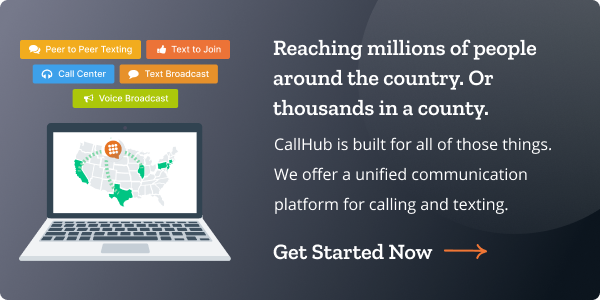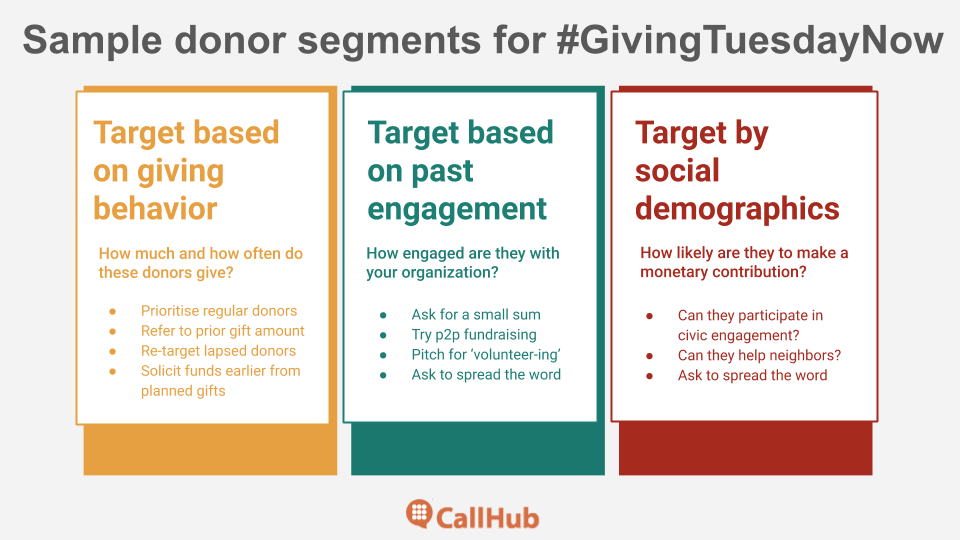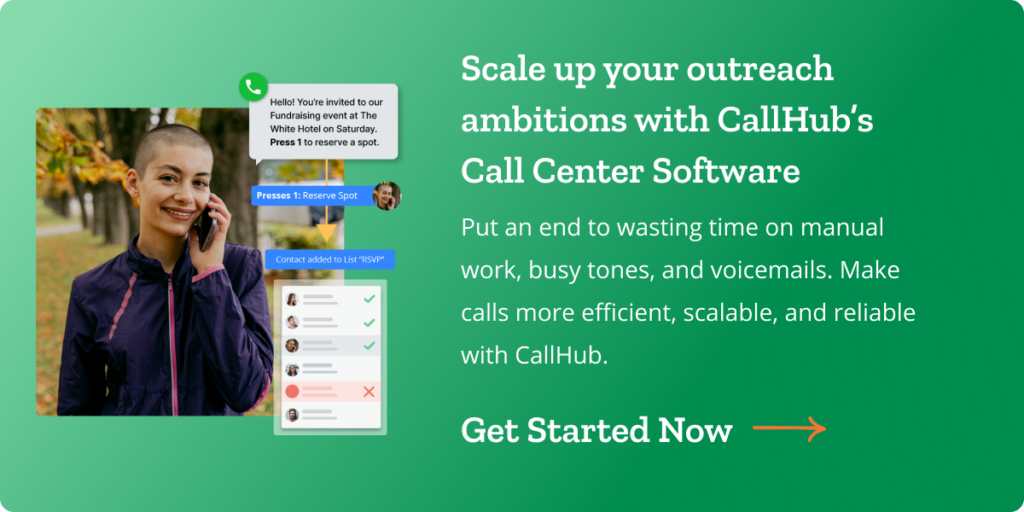Want to stand out amongst the thousands of organizations vying for people’s attention this Giving Tuesday?
You will need a plan.
If you’re looking for resources that can help you plan your nonprofit’s campaign, this is the Giving Tuesday toolkit for you. We talk about (and link out to resources for):
- Creating a timeline
- Donor Targeting
- Messaging
- Measuring success
- Donor retention
Will Giving Tuesday lead to donor fatigue for later giving?
Never underestimate the intention of your donors to actually want to do good. Charitable giving is up, showing that donors give out of genuine philanthropic interest. In the past year:
- Overall giving has gone up by 4.1%
- Online giving has gone up by 12.1%
- Online revenue has increased by 23%, up from 15%
What this means is that Giving Tuesday would merely be a way for you to channel their goodwill and encourage them to donate.
According to Classy, 26% of annual fundraising happens between Giving Tuesday and the end of the year (31st Dec).
In conclusion, Giving Tuesday shouldn’t impact giving later on.
Useful resources:
◙ Is Giving Tuesday Worth It?
◙ An Honest Look at the Pros & Cons of #GivingTuesday
Giving Tuesday Dos and Don’ts
Dos
- Maintain consistent branding.
- Segment donors for targeted messaging.
- Have a communication plan leading up to and on the day of the event.
- Link to your donation form in your messages across channels.
- Have a matching gift program in place.
- Keep track of how your messages are doing throughout the campaign.
Don’ts
- Send solicitations to those who have already donated on Giving Tuesday.
- Put your organization in the spotlight when talking about your cause.
- Forget to test your links and donation form.
- Ignore younger donors
- Send your major donors a generic email.
- Make a broad ask.
Other useful resources:
◙ Fundraising Don’ts vs. Do’s: Giving Tuesday Email + Donation Pages
◙ The Do’s And Don’ts Of Giving Tuesday
Planning for Giving Tuesday


Before you put into practice the strategies we discuss further on, you’ll need to plan your timeline:
Giving Tuesday Timeline
Here’s how your timeline should look over a 4-week period. This time period can vary based on the scale of your campaign:
Week 1 (Day 30- 21 before the launch)- Begin your campaign
- Assign staff and volunteers in key positions.
- Finalize your marketing materials.
- Update your website.
Read Next: Website Prep Tips for Giving Tuesday Campaigns
Week 2 (21- 14 days before Giving Tuesday)- Start putting yourself out there
- Announce your campaign across your communication channels.
- Start your drip campaign of email + texts.
Week 3 (14 – 7 days before the Giving Tuesday campaign)- Increase communication frequency
- Continue posting on social media and sending targeted messages through other channels.
- Start conversations with supporters on social media and via P2P texting.
- Encourage staff and volunteers to share your social media posts.
- Countdown to Giving Tuesday.
Week 4 (Day 7 – the day of the event)
- Send out your final emails and texts.
- Keep donors and volunteers updated on fundraising milestones.
- Thank donors and volunteers.
Useful resources:
◙ Longer term Giving Tuesday planning
◙ 7 day plan for Giving Tuesday
Keep a checklist ready
- Set your fundraising goals
- Determine the budget for your Giving Tuesday campaign
- Segment your contact list for better message targeting
- Determine your Giving Tuesday campaign channels and tools
- Create marketing collateral
- Prepare your donation page
- Schedule your messages and follow-ups for each channel
- Test your emails and donation page across multiple devices
Useful resources:
◙ The Ultimate #GivingTuesday Checklist
Donor Targeting for Giving Tuesday
The objective of most of your fundraising efforts thus far has been to only target donors who are likely to donate and win funds.
For Giving Tuesday, the idea is a bit different. You would reach out to every donor in your list and ask them to participate in Giving Tuesday in any way they can.
So for highly engaged donors, it could be via a donation. For certain supporters, it could simply be sharing the efforts of your organization on social media.
Useful resources:
◙ Fundraising 101: Donor Segmentation and Targeting
◙ 5 Ways to Target Donors for Year-End Fundraising Success
Here is a quick breakdown of segmenting your donor list:


Targeting plays a huge role here because you want to make highly relevant asks to each donor on your list. It would be a lost opportunity if you contacted a loyal donor with only a #unselfie ask.
Let me break down these segments for you a bit more:
Target based on past giving behavior
For existing donors in your database, the ask will vary depending upon whether they are recurring donors, one-time donors, lapsed donors etc. For example, you would prioritise targeting recurring donors over a lapsed donor (as they are more likely to give).
The past giving behavior also (to some extent) correlates to the donation ask for #GivingTuesdayNow. Eg. Major donors can be targeted with a much higher fundraising ask, than your grassroots donors.
Target based on prior engagement
While going through your prospect lists you will undeniably find certain prospects who are supporters for your cause but don’t typically make a donation. That is, they would attend your rallies, be active on your social media pages, share your success stories, and yet not be comfortable donating.
There are two ways you can make an ask to this segment. You can either approach them with a one-time donation (of a lesser value). Or, you can ask them to continue doing what they are doing – and spread the information about your Giving Tuesday program.
Target based on social demographics
Young millennials and college students might not be in a great position to donate. Neither would the middle-class (if they are facing job cuts or economic insecurity).
So you can target single-income households, households with children, etc., with not a fundraising ask but a civic engagement one.
E.g. Can they put up a lawn sign supporting your organization for Giving Tuesday? Can they do one act of kindness (like help the elderly get their groceries) to join your Giving Tuesday spirit?
These asks are still relevant because it could lead to more awareness, an increase in your supporters, and eventually future donors.
Now we know that it would be tough (and extremely tedious) to map out such a detailed donor targeting strategy.
So we suggest you pick the targeting that you know would work best for your audience and work your communication plan around it.
Donor Messaging for Giving Tuesday
A Giving Tuesday toolkit would be incomplete without proper guidance for messaging.
Your messaging should not just be focused around conversion (or winning more donations), but around asking for a donor’s help with your cause.
Here are certain guidelines that can help you strike the right balance between ‘making a persuasive ask’ and ‘making an insensitive one.
Be Authentic
Make the ask about your cause and the people who will benefit from the funds raised.
Be data-driven
Personalize messaging so that donors who have contributed in the past are thanked before they are asked to donate again.
Be clear in your stance
Ensure that your messaging conveys the importance of what you do and why they need to donate.
Useful resources:
◙ Nonprofit Messaging 101: Your Nonprofit’s Key Messages
◙ How to Improve your Nonprofit Messaging
Donor Acquisition Channels for Giving Tuesday
Social media, emails, phone calls, and text messages; these are the channels you would be typically using to communicate with your donors.
Since you are pressed for time (and probably other resources), use these channels in a way that they can give you the best returns. Here’s how:
Social media
While a lot of activity happens on social channels around Giving Tuesday, it is important to remember a crucial factor. Facebook, Twitter, and Instagram have wide reach, but are not personal enough to win major donations.
They are excellent for encouraging a large number of people to make small contributions. But the true power for social media marketing for this Giving Tuesday lies elsewhere.
Use it for:
- Creating buzz around your organization’s efforts towards Giving Tuesday.
- Building momentum for your peer-to-peer fundraising efforts.
- Running re-targeting ads to bring in past donors. Lapsed donors (and one-time donors) can be encouraged to give again.
- Running look-alike audience ads (based on your existing donor list), to bring in new donors for this effort.
- Following up on drop offs: During the big day, social media ads can be sent to those prospects who have visited your Giving Tuesday donation page and dropped off without a donation. These ads can encourage the donors to pick up where they left off and finish the donation.
- Promoting your nonprofit (or driving more awareness): Run retargeting ads for those donors who have made a donation and ask them to spread the word.
Messaging plays a huge role to ensure that your audience don’t feel “harassed”. Refer to the section above while you craft your social media messages.
Useful resources:
◙ Building a digital nonprofit communication plan for the donor journey
◙ A Quick Guide on How Facebook Fundraisers Work
Emails
Emails are a major driver in raising funds for any cause. Giving Tuesday is no different. As a rule of thumb, you would probably be sending
- An introductory email
- A follow up email
- A reminder email: To ensure that your donors do not miss the big date.
- A thank-you email: Both immediately after they complete the transaction and also after the Giving Tuesday giving is over.
If you have the resources, you can schedule ‘keeping the buzz’ emails. They could talk about your organization’s stories, what you are hoping to achieve in this effort etc.
Useful resources:
◙ Email Marketing for Nonprofits: Best Practices and Tools
Phone Calls


Usually fundraising efforts via phone calls are limited to your major fundraising programs. However, these are extraordinary circumstances. So they call for extreme measures from your end to win more donations.
Phone Calls could be just the ticket. Here are a few ways you can use your call center software for Giving Tuesday efforts.
- You can set up a calling campaign ahead of Giving Tuesday to give your donors a heads-up about what is coming. During this campaign, you can also collect data on how many of your donors plan to support you for this fundraiser (ask politely, ‘Can we count on your support?’).
- All those who give a positive response can be called again on the big day to check if they have indeed completed the donation.
Now this is a lot of effort.
Since you would probably be pressed for resources, here is an alternative.
- You can run calling campaigns only to specific donor segments (instead of calling everyone on your list). E.g., you can choose to contact only major donors or only recurring donors and encourage them back with a ‘one-time giving’ ask.
- You can also do a volunteer recruitment campaign ahead of time and ask these volunteers to spread the word.
- Invest in a calling software, like CallHub that can fast-track calling (upto 3x more dials per hour), select specific segments to call in the form of contact lists, and integrate with your CRM.
That way, you increase the chances of winning more funds, and creating higher awareness with less effort.
Useful resources:
◙ A Quick Guide to Kickstart Telephone Fundraising
Text messages
SMS and MMS are excellent fundraising channels for Giving Tuesday. Instead of merely making it transactional (using SMS to only say that their payment is successful), you can use this channel to drive more conversations.
- You can use P2P text messages to check with your most engaged supporters if they would like to contribute to your cause.
- You can send out a broadcast text to all your prospects to raise awareness about your fundraising effort. The choice of using SMS or MMS is yours. However, MMS (or images) get better engagement.
- For better conversions, you can segment your prospects based on their giving behavior and send them relevant asks (refer to the section on segmentation above).
- To make your texts relevant, club your calling and texting campaigns together. You can follow up on your highly promising lead with a personal text message. That way, you still keep your asks conversational while putting in less effort than a calling campaign.
Keep in mind that communication across all these channels should be seamless. That is, if a prospect has already agreed to donate during Giving Tuesday, then the subsequent texts and emails should reflect their choice.
Similarly, if a prospect has declined to donate, sending them an email ask reflects poorly on you.
Instead, you can refer to their previous choice and offer them suggestions on how they can get involved without making a donation.
Quick tip: You know your donors the best. So pick a channel that you know will get you the best responses (even if it is not a popular choice). For instance, if you think your donors would find a phone call intrusive but are more open to text messages, go ahead and text them!
How do you measure the success of your Giving Tuesday efforts?
The fundamental metric is of course the amount of money raised. However, there are other ways to determine success.
Useful resources:
◙ Eight Ways to Measure Fundraising Success
◙ 16 Fundraising Success Metrics to Start Tracking
Here are a few more variables you can measure:
- The increase in the number of leads: Thanks to intensive social media outreach and your supporters sharing your efforts, you will attract fresh leads for your organization. They may not have donated during this campaign. But they have indicated interest. These are fresh leads for you to engage, build a relationship with, and convert to donors.
- Increase in engagement with existing donors: Not all donors would be comfortable with giving right away. Regardless, striking up a conversation with donors during this time would revive relationships and amp up their engagement with your cause.
- Giving inspired by Giving Tuesday at a later date: As a result of awareness caused by your Giving Tuesday campaign, you will be getting supporters and volunteers in the future. Ensure that you have a way to identify this segment (maybe add a field in your form: How did you hear about us?).
- Average gift amount and number of donors: These are the usual ways of measuring success for every fundraiser. What is different in this would be to see how giving patterns are influenced by a crisis. For instance, it could inspire more donors to donate but give only a lesser amount. So you will have an increase in donors but a lesser average gift amount.
- Variety in the kinds of gifts: The sheer variety of the kind of gifts you receive can also be a good indicator of how successful your efforts were. Were you able to get a matching gift in? Did businesses and other organizations participate in your fundraising efforts? Have you been bestowed a planned gift early? If you have been able to diversify your fundraising efforts, then that could also be considered a win!
Useful resources:
◙ Peer-to-Peer Fundraising: A How-To Guide for Raising Money
◙ Text-to-donate VS text-to-give
◙ Fundraising with SMS – Webinar
Keeping new donors after Giving Tuesday
Having a strong donor retention strategy is a necessary element in a Giving Tuesday toolkit. It ensures retention of all the new donors that found out about your organization on Giving Tuesday.
It involves:
- Thanking new donors in meaningful ways
- Sending them impact updates
- Sharing more opportunities to get involved
Useful resources:
◙ Donor Retention: All the Questions You Need to Ask
◙ Donor Recognition: Best Practices to Nurture Donor Relationship
—
Looking for more resources for Giving Tuesday?
Once you have the fundamentals of your Giving Tuesday Toolkit ready, you can focus on every outreach channel in further detail. Check out these useful resources to guide you:


